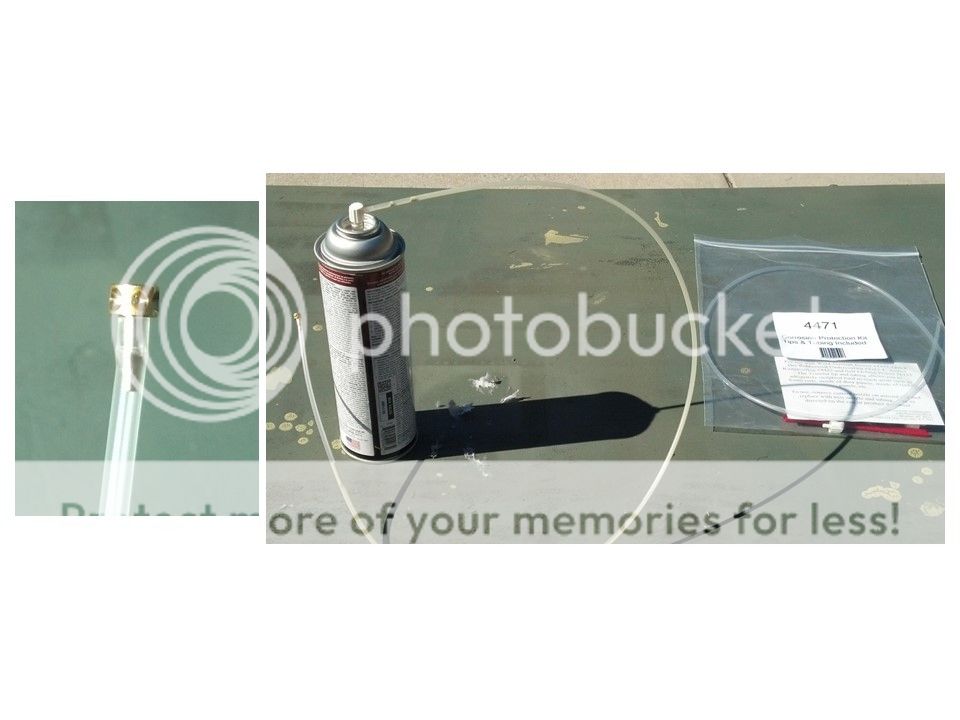I've been putting off the priming of my torque tubes because I didn't have a great method in my mind for getting good coverage. On the RV10, the tubes are over 7.5 ft long each, so access is not easy.
The most frequent suggestion I've seen was to spray "a bunch" of primer inside the tube and swirl it around. I didn't feel comfortable that the rattle can had enough juice to go the length of the tube, so my best solution at the time was to buy Variprime and use it for the swirl. My thinking was that more liquid = better (compared to a rattle can). Problem was that the quart size of Variprime was going to cost over $120 with the converter. That stuff is liquid gold!
As I was at the auto paint store telling the guy what I was trying to do, he suggested an extension for the rattle can with a 360 deg nozzle on the end. Apparently its used in the autobody world for rust prevention around doors and fenders pretty frequently. The extension reaches 4ft so that my aircraft tubes could be primed from each end - and the best part was the cost was only $35. Sold.
Not much to the technique, but be aware of how small the surface area is that's being painted. If you are slow with the retraction of the nozzle, the primer will run all over.
Hope this idea helps someone else and prevents as much head scratching time as I wasted.
[URL=http://s296.photobucket.com/user/senecaprop/media/SprayExtensionNozzle_zpsqttehlhh.jpg.html] [/URL]
[/URL]
The most frequent suggestion I've seen was to spray "a bunch" of primer inside the tube and swirl it around. I didn't feel comfortable that the rattle can had enough juice to go the length of the tube, so my best solution at the time was to buy Variprime and use it for the swirl. My thinking was that more liquid = better (compared to a rattle can). Problem was that the quart size of Variprime was going to cost over $120 with the converter. That stuff is liquid gold!
As I was at the auto paint store telling the guy what I was trying to do, he suggested an extension for the rattle can with a 360 deg nozzle on the end. Apparently its used in the autobody world for rust prevention around doors and fenders pretty frequently. The extension reaches 4ft so that my aircraft tubes could be primed from each end - and the best part was the cost was only $35. Sold.
Not much to the technique, but be aware of how small the surface area is that's being painted. If you are slow with the retraction of the nozzle, the primer will run all over.
Hope this idea helps someone else and prevents as much head scratching time as I wasted.
[URL=http://s296.photobucket.com/user/senecaprop/media/SprayExtensionNozzle_zpsqttehlhh.jpg.html]
 [/URL]
[/URL]



